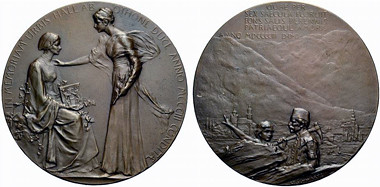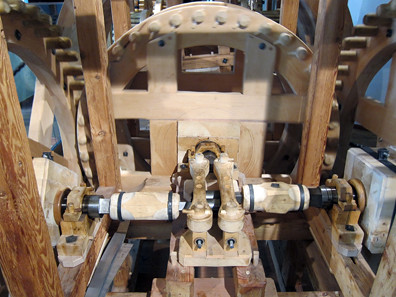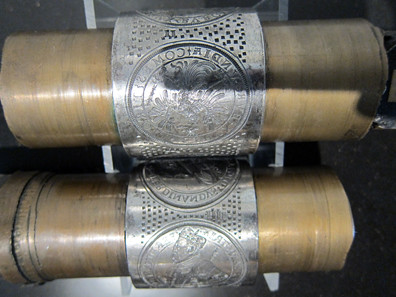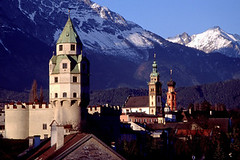
PREV ARTICLE
NEXT ARTICLE
FULL ISSUE
PREV FULL ISSUE
THE MINT MUSEUM AT HALL IN TYROL
Ursula Kampmann has another great article in CoinsWeekly on her trip to the coin museum at Hall in Tyrol. Here are a few excerpts and images, but be sure to read the complete article online.
-Editor
The Hall salt pans were mentioned for the first time in 1232. The counts of Tyrol – first the Meinhardiners, then the Habsburg – invested in this place creating thus their wealth which would lead to their ascent. At this epoch salt was considered the white gold since it was the only way of curing meat and fish, being therefore one of the paramount resources of the pre-refrigerator epoch.

Hall in Tyrol. Medal 1903 by Stefan Schwartz Hall was a prosperous city, owing its wealth not only to the salt but also to the trade. There, the merchants were able to cross the River Inn over a bridge, and the river was navigable right up to Hall. Two important fairs took place in Hall, and since 1486 there was the mint where silver from the neighboring Schwaz was transformed into coins. In this golden age, Hall was approximately twice as big as nearby Innsbruck.

Rolling Mill Hall Mint Museum

Roller Dies Hall Mint Museum At Hasegg Castle the mint had been accommodated since the sixteenth century. Today it houses a unique museum of minting technology where the visitors can admire a great number of original minting machines and replicas. An audioguide in several languages gives particularly thorough information at hand and is, therefore, of special interest for coin collectors who go there with their family. Indeed they offer a special children version as well that gives an understanding of the objects in an age-appropriate and at the same time intriguing way.
To read the complete article, see:
A trip to Hall in Tyrol
(www.coinsweekly.com/en/News/4?&id=1557)
The Numismatic Bibliomania Society is a non-profit organization promoting numismatic literature. See our web site at coinbooks.org. To submit items for publication in The E-Sylum, write to the Editor at this address: whomren@gmail.com To subscribe go to: https://my.binhost.com/lists/listinfo/esylum All Rights Reserved. NBS Home Page Contact the NBS webmaster 
|
